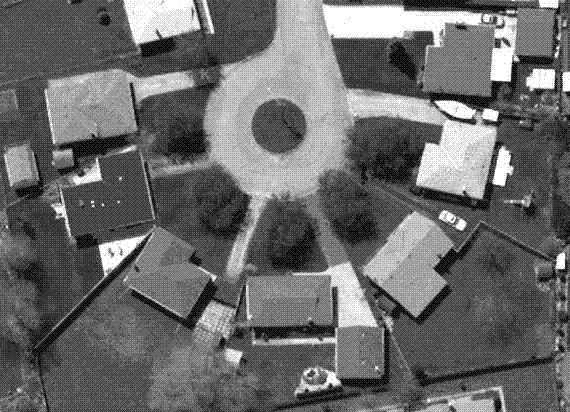Line matching method based on affine invariant feature and homography
A homography matrix and affine invariant technology, applied in image analysis, instrumentation, computing, etc., can solve problems such as low efficiency, loss of topological relationship of line segments, lack of constraint relationship of line matching, etc., to achieve accurate transmission and improve matching accuracy rate, reducing search difficulty
- Summary
- Abstract
- Description
- Claims
- Application Information
AI Technical Summary
Problems solved by technology
Method used
Image
Examples
Embodiment
[0049] The experimental data of this embodiment are as figure 1 and figure 2 As shown, the spatial resolution is high, and the coverage is relatively large, covering types of objects such as buildings, roads, vegetation, and bare land.
[0050] The line matching method based on affine invariant feature and homography matrix of the present embodiment comprises the following steps:
[0051] Step 1. Obtain the optimal homography matrix between remote sensing image pairs.
[0052] This embodiment uses the RANSAC iterative algorithm based on affine invariant feature matching to obtain the optimal homography matrix between remote sensing image pairs. The specific algorithm is as follows:
[0053] 1. Use MSER as an affine invariant feature extraction operator and SIFT as a feature description operator to perform feature extraction of two images and generate feature vectors;
[0054] II. Perform distance calculation between the feature vectors of the two images to obtain matching ...
PUM
 Login to View More
Login to View More Abstract
Description
Claims
Application Information
 Login to View More
Login to View More - R&D
- Intellectual Property
- Life Sciences
- Materials
- Tech Scout
- Unparalleled Data Quality
- Higher Quality Content
- 60% Fewer Hallucinations
Browse by: Latest US Patents, China's latest patents, Technical Efficacy Thesaurus, Application Domain, Technology Topic, Popular Technical Reports.
© 2025 PatSnap. All rights reserved.Legal|Privacy policy|Modern Slavery Act Transparency Statement|Sitemap|About US| Contact US: help@patsnap.com



